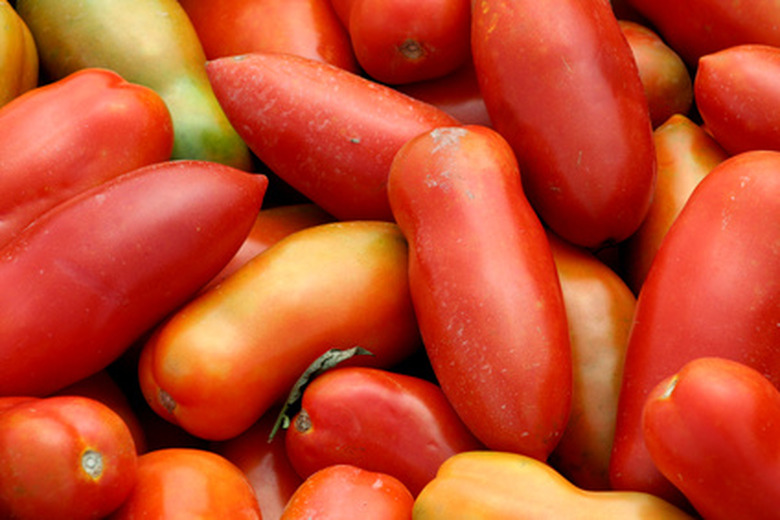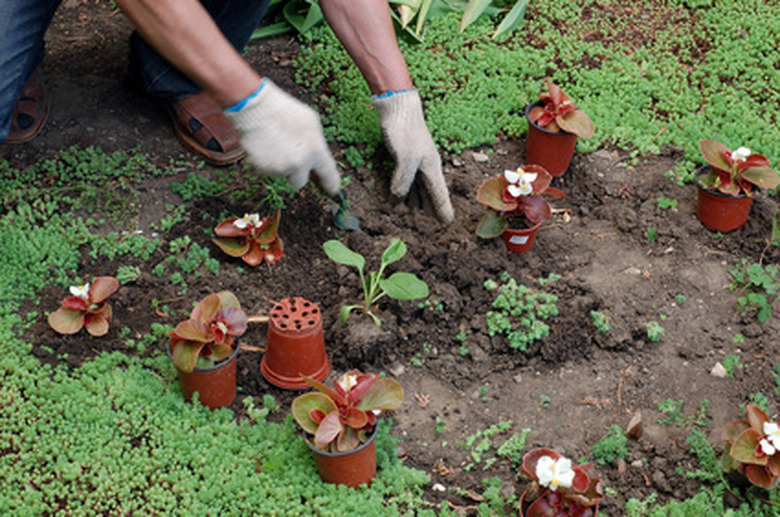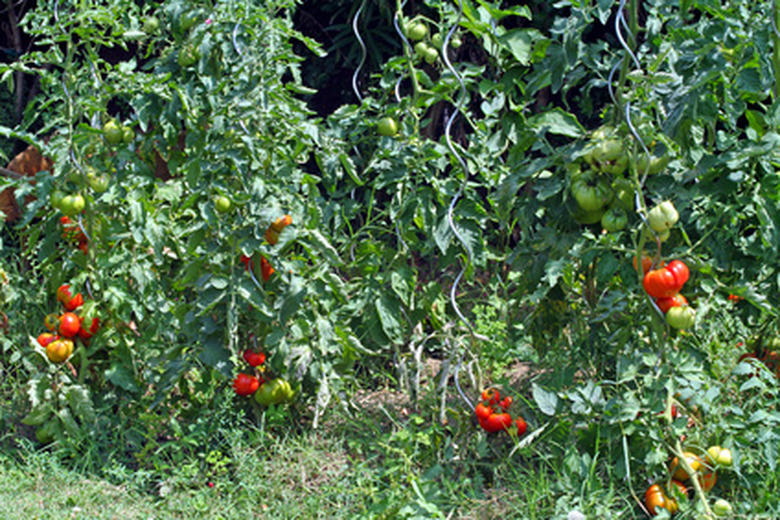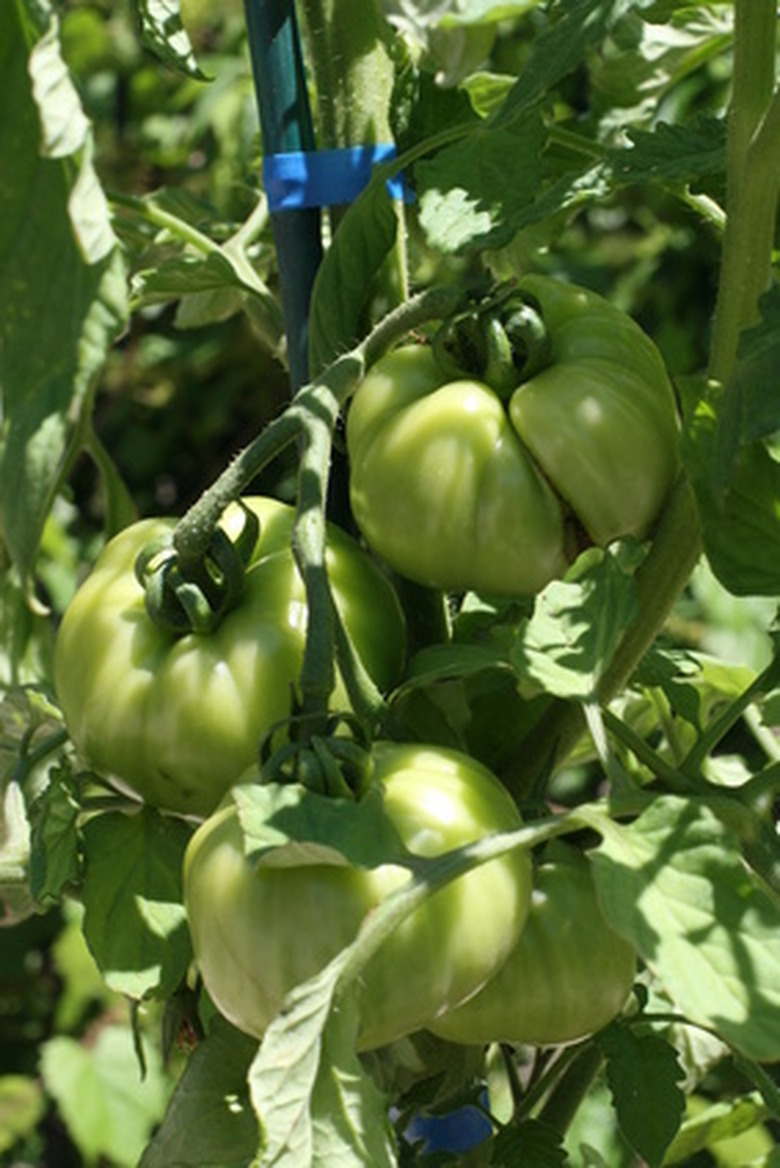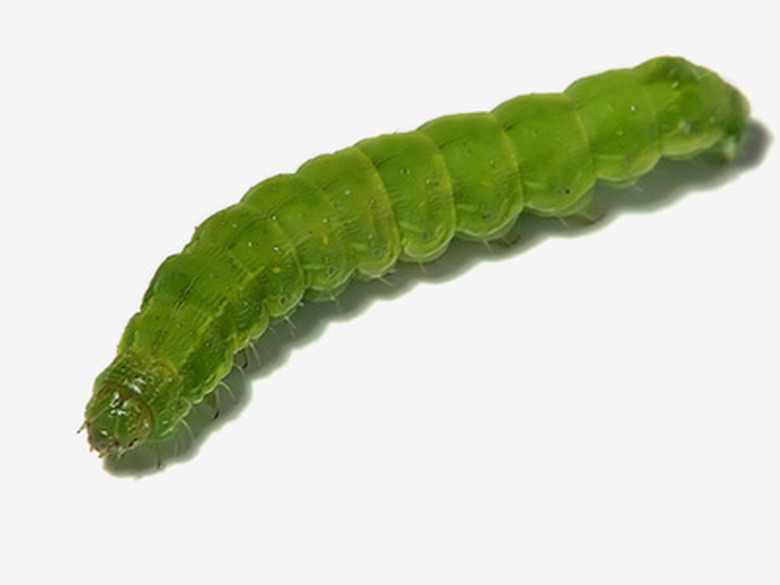How To Grow San Marzano Tomatoes
San Marzano tomatoes have become the darling of the gourmet world. Italy's secret to full-flavored tomato sauces has reached beyond its borders; you can buy seeds or seedlings and grow this marvel in your own garden, wherever you are. San Marzano is an indeterminate type paste tomato, so the techniques are pretty much the same as for any long-season tomato. The key to success is duplicating the growing conditions of this tomato's native Naples.
Getting Transplants Going
Step 1
Buy San Marzano seeds from a reputable dealer. Many tomato varieties are available, including several kinds of San Marzano. They are all good, but make sure you are buying a non-hybrid variety.
- San Marzano tomatoes have become the darling of the gourmet world.
- San Marzano is an indeterminate type paste tomato, so the techniques are pretty much the same as for any long-season tomato.
Step 2
Start seedlings six to eight weeks before your last frost date. Use a good quality potting soil, with some compost and fish meal mixed in. Keep seedlings warm and the surface of the soil moist. The best way to do this is to grow them indoors and keep a cover (preferably transparent) over the seedlings. If you are using a flat or pots, scatter your seed thinly and evenly. If you are planting in individual cells, plant two or three seeds per cell.
Step 3
Thin seedlings after the first true leaves appear. Those will be the second set of leaves, the ones that aren't just round and generic looking. If you are growing in a flat or pot, thin your seedlings to 2 inches apart. If you are using cells, thin to one strong plant per cell.
- Start seedlings six to eight weeks before your last frost date.
- If you are growing in a flat or pot, thin your seedlings to 2 inches apart.
Step 4
Move seedlings outdoors gradually. Wait until a week after your last frost, and start with a few hours a day. Increase the outdoor time over a period of about two weeks. Meanwhile, prepare your planting spots.
Step 5
Transplant your tomatoes when they get to be around 6 inches tall. Dig a deep hole for each tomato plant, as deep as the plant is tall. Mix some compost, phosphorus. potassium, and a silica supplement with the soil you removed from the hole. Add enough of this soil to the bottom of the hole to allow the plant to have its topmost set of leaves 2 to 3 inches out of the hole.
- Move seedlings outdoors gradually.
- potassium, and a silica supplement with the soil you removed from the hole.
Step 6
Strip off the lower leaves of each plant, gently. Place the plant in the hole and fill around it with the amended soil. Pack it firmly, but don't step on it. Finish by shaping the soil around the hole to form a basin to hold water. Water well, but don't leave everything soggy.
Maintaining Your Plants
Step 1
Water each tomato regularly and well. A healthy tomato requires 1 to 2 inches of water per week. You may need to water more if your tomatoes are in pots or other containers. Monitor the soil; if it is dry below the surface, it's time to water. Use a mulch around the plants to retain moisture. Regular watering is important to prevent blossom end rot and cracking.
- Strip off the lower leaves of each plant, gently.
- Monitor the soil; if it is dry below the surface, it's time to water.
Step 2
Use a tomato cage, or stake your plants as they grow. A 5- to 6-foot pole with notches makes a good stake and pantyhose pieces make good ties. You want your stake to be sturdy and able to hold ties and prevent them from sliding. Ties should be sturdy but moderately stretchy, so they don't break or cut the plant stems. Continue tying your plant as it grows.
Step 3
Watch for pests. Tomato hornworms are big and can be picked off by hand and destroyed. They are large and green and you will find them on the underside of leaves. Aphids and other flying pests can be discouraged with a soapy spray.
- Use a tomato cage, or stake your plants as they grow.
- You want your stake to be sturdy and able to hold ties and prevent them from sliding.
Step 4
Start picking tomatoes about 80 days after you put your seedlings in the ground. Test your tomatoes by very gently squeezing them. If they are a little soft to pressure, they are ready, even if the shoulders are still a bit green. Keep harvesting until the first frost approaches, then pick those that are full grown and allow them to ripen indoors.
Tip
Plastic tube-shaped cages will keep your plants warmer in the earlier part of the season. Silica supplements can be found through hydroponic growing suppliers, if you can't find it at your garden supply center. San Marzano are not the best tomato for eating fresh; you'll appreciate their flavor once you've cooked them or dried them. Cardboard egg cartons make a good first-step container for starting seedlings. Shake your tomato plants once they start blossoming. This will help with pollination.
Warning
Water your tomatoes regularly. You can experience many tomato problems by just watering when you feel like it. Unlike most other paste tomatoes, San Marzanos are indeterminate. Make sure you allow enough space for these plants to vine or sprawl.
